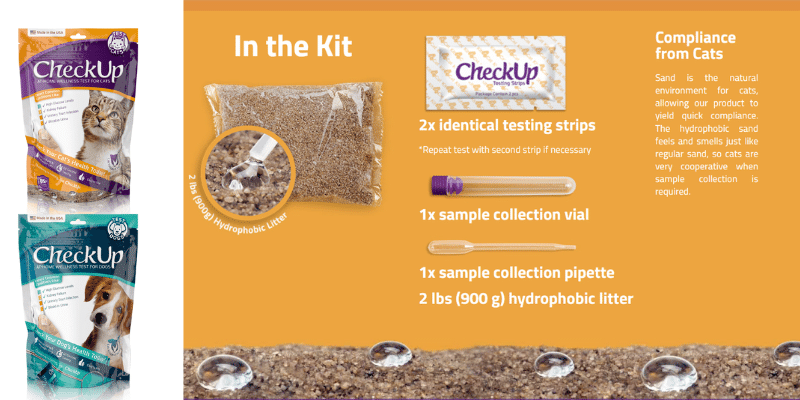Do You Know What the Signs of Distemper Are?
Since our pets cannot directly tell us what is wrong, we need to be extra observant when it comes to their health. The Distemper virus comes along with deadly and scary symptoms in both cats and dogs, and it is important to learn what to look for in your pet. Animals use body language to help express how they are feeling. Not only will you notice physical symptoms of illness, but you may also see changes in your dog or cat’s personality and subtle behavior changes. Usually, the combination of physical symptoms and behavior changes are a good indication that we need to look at little closer to identify a medical problem.
Learn to Look for the Warning Signs
Not every bout of sickness will warrant a trip to the veterinarian, however, if you notice your cat or dog is exhibiting unusual symptoms, create a log and document the frequency and severity of each symptom. For example, if your dog is throwing up multiple times in one day for more than a day or two, it is probably a good idea to call your vet for medical advice. You know your pet better than anyone, so write down even small changes that you notice. You may save their life!
Distemper Symptoms in Dogs
Canine Distemper has three main stages of symptoms. Each stage impacts three main body symptoms of a dog, including the upper respiratory tract, the gastrointestinal tract, and the central nervous system. Look out for the signs listed below, but remember, every dog is different and clinical signs can present differently in every dog.
The First Stage


Second Stage
 In the second stage of Canine Distemper, the gastrointestinal tract may become inflamed, causing nausea, vomiting, and diarrhea. If your dog vomits several times in one day or for more than one day in a row, it is time to contact your vet! Your dog may also gulp several times, lick his or her lips, or lick the air if he or she is feeling nauseous. Another way to identify nausea in your dog is if he or she is eating grass. Animals tend to do this to either soothe their stomachs or to induce vomiting. Diarrhea is a common sign and is unformed or loose stools that often occur more frequently than a normal bowel movement. It is the result of faster movement of feces through the intestines, in addition to a decrease in water, nutrient, and electrolyte absorption.
In the second stage of Canine Distemper, the gastrointestinal tract may become inflamed, causing nausea, vomiting, and diarrhea. If your dog vomits several times in one day or for more than one day in a row, it is time to contact your vet! Your dog may also gulp several times, lick his or her lips, or lick the air if he or she is feeling nauseous. Another way to identify nausea in your dog is if he or she is eating grass. Animals tend to do this to either soothe their stomachs or to induce vomiting. Diarrhea is a common sign and is unformed or loose stools that often occur more frequently than a normal bowel movement. It is the result of faster movement of feces through the intestines, in addition to a decrease in water, nutrient, and electrolyte absorption.
You may also notice a persistent cough that just won’t seem to go away, and potentially a lack of appetite in your dog. When a dog won’t eat, it is referred to as anorexia. Anorexia in dogs is dangerous, as they are not receiving the nutrition that they need to function properly. If your dog will not eat for more than a meal or two, call your veterinarian right away.
Third Stage
In the last stage of the disease, neurological symptoms begin to appear. Neurological signs such as circling, tilting the head, jerking of the muscles, seizures, and an overall change in normal behavior will usually occur within one to three weeks. Be on the lookout for aggressiveness, tics/tremors, retinal discoloration, and hardening of the pads of the feet. In severe cases, partial or full paralysis can occur.
Distemper Symptoms in Cats


Pregnant cats that become infected unfortunately may abort a fetus or give birth to kittens that have damage to their brains. These kittens with birth defects may have trouble with nerve coordination, muscle control, and body movements. An infected pregnant cat may also experience fetal resorption, where the fetus disintegrates inside the uterus, stillbirth, or in rare cases, fetal mummification.
Find 24-Hour Emergency Care for Your Pet
Injuries and illnesses do not always show up during the business hours of 9-5pm. In the event of severe illness such as Distemper, make sure that you have a plan for your pet. Talk to your veterinarian about an emergency protocol, and find out if your vet provides 24-hour round the clock service. If not, you should identify an emergency animal hospital in your area. Keep the name and phone number of your vet and the emergency clinic somewhere you or someone in your home can easily access, such as on the refrigerator. Remember, identifying symptoms of illness can be a matter of life and death for your pet, so it is always important to seek medical advice if you believe something may be wrong!















